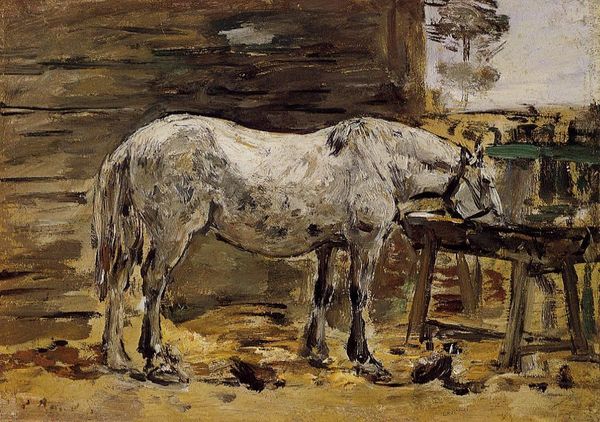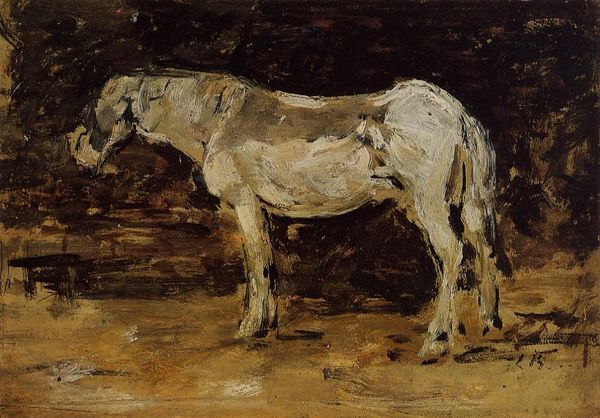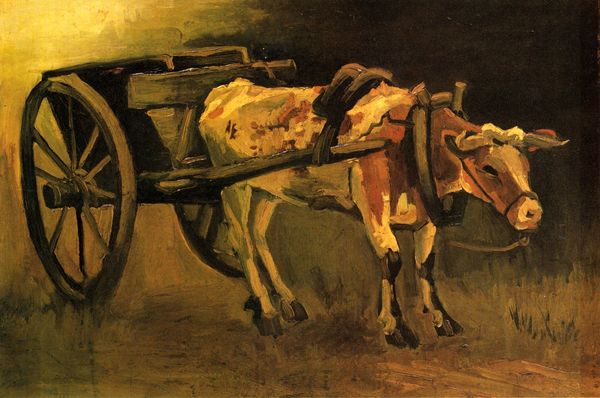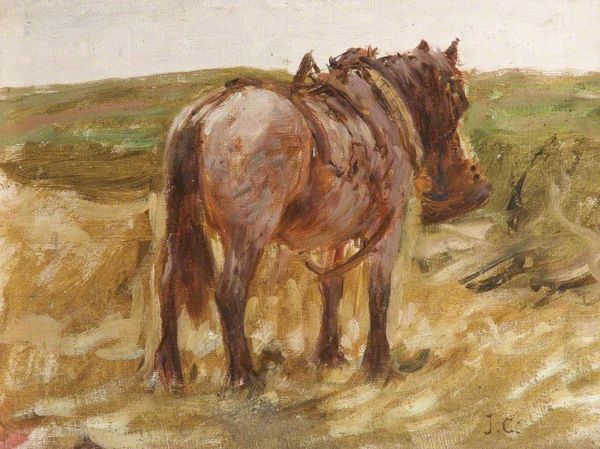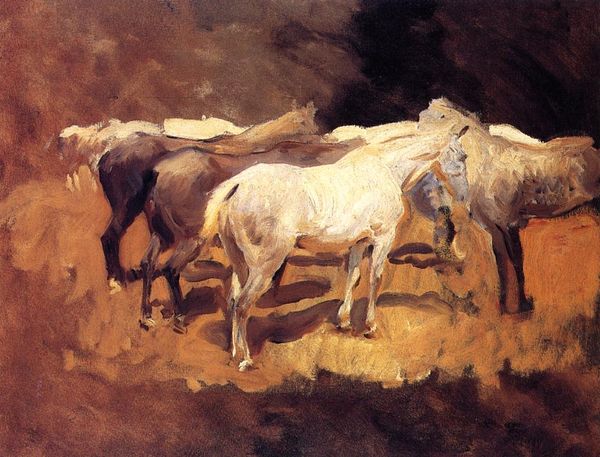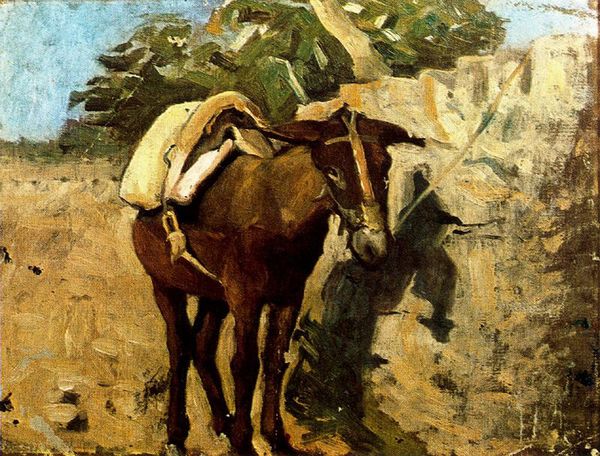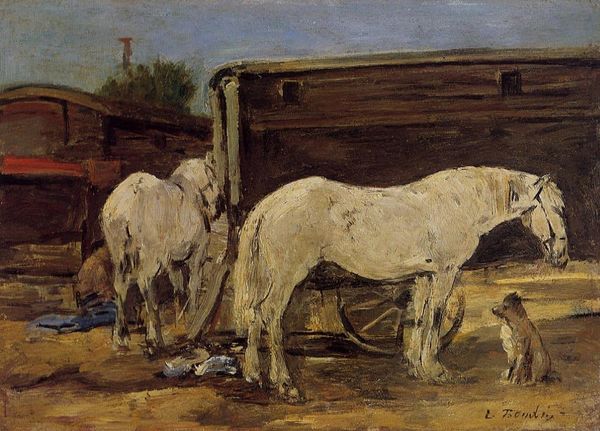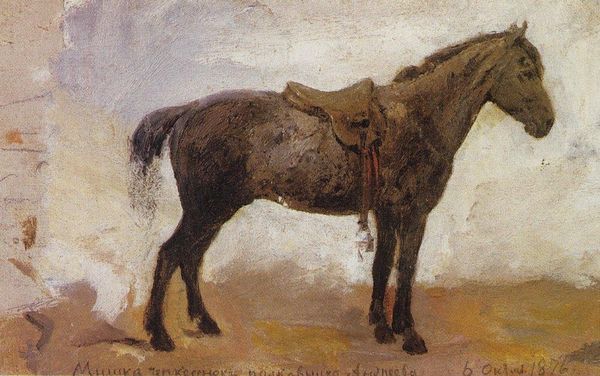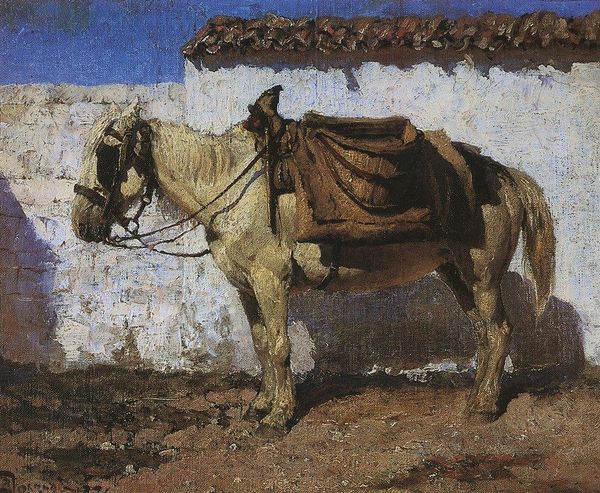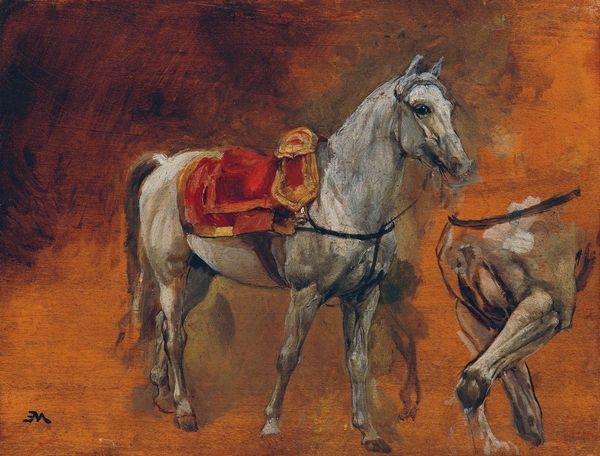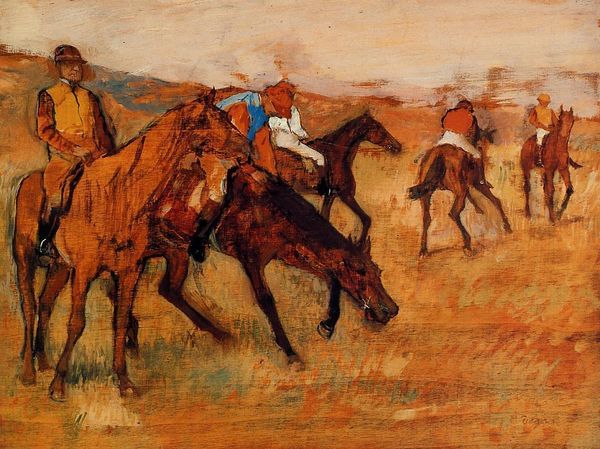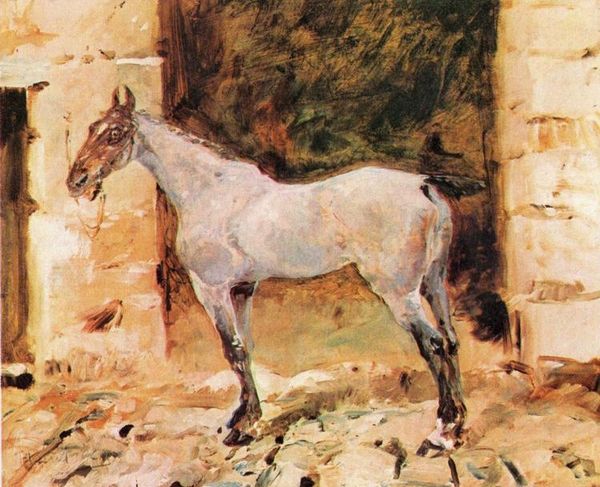
painting, oil-paint
#
animal
#
painting
#
impressionism
#
oil-paint
#
landscape
#
charcoal drawing
#
impressionist landscape
#
oil painting
#
horse
#
painting painterly
Copyright: Public domain
Curator: We’re looking at Eugène Boudin’s “Harnessed Horses,” painted around 1890, executed in oil. What strikes you first about it? Editor: The subdued palette is instantly compelling – browns, whites, grays. It creates a feeling of quiet labor, of work, certainly not the glory of the equestrian painting, it has the quality of raw, physical toil and a workaday, agrarian feel. Curator: That muted palette perfectly reflects the daily lives of working horses. Boudin, more famous for his beach scenes and seascapes, turned his eye here to the tools and materials, those essential to the agrarian life and burgeoning industrial production. The harnesses, the way the horses' muscles ripple even at rest... It speaks to the interaction between humans and animals within this particular labor framework. Editor: Horses have carried a deep symbolic weight, you know, symbols of strength, nobility, even war, throughout history. But here, stripped down. These are not idealized steeds of battle or sport but rather the symbols of toil and burden and work. They evoke humility, something deeper than the surface. It is also remarkable what is hidden—these animals that do so much are in shadow. It speaks to their societal position, as well. Curator: Exactly. Their posture hints at exhaustion. It is a depiction of the daily conditions of beasts of burden and highlights the critical, perhaps even sacrificial position of their labor as these modes of production begin to ramp up, moving toward WWI. The textures of the oil paint further enhance the realism, grounding the artwork in tangible materiality and evoking the harsh environment of labor practices in rural, pre-industrial contexts. Editor: I hadn't considered that pre-WWI timing. And you’re right about that paint handling. Now I am noticing how Boudin's loose brushwork almost obscures their individual forms, they could almost fade away into pure light or landscape if you stepped back from them. They merge together because their fates are entangled. Curator: He really emphasized the quotidian grind. Now that you pointed out how their symbolism is somewhat dissolved, it really hits that there is a parallel between animal and human labor. These are bodies pushed to their limits and boundaries—a sentiment still resonant. Editor: That’s a lovely point to underscore as we consider what survives through symbols and images—and perhaps, what quietly evolves within those inherited images. Curator: Indeed, something worth considering as we move forward.
Comments
No comments
Be the first to comment and join the conversation on the ultimate creative platform.
